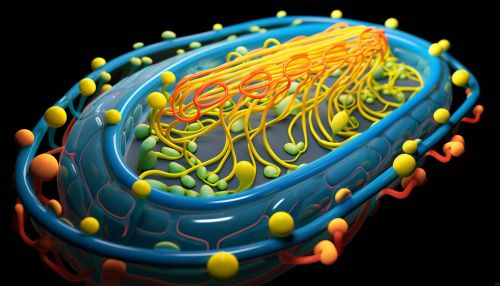The Role of Oxidative Phosphorylation in Cellular Metabolism
Introduction
Oxidative phosphorylation is a metabolic pathway that uses energy released by the oxidation of nutrients to produce adenosine triphosphate (ATP). It is the final stage of cellular respiration, a process that breaks down glucose and other organic molecules to produce ATP, the main energy currency of cells. This process is crucial for life, as it provides the energy needed for various cellular processes, including biosynthesis, transport, and mechanical work.


The Process of Oxidative Phosphorylation
Oxidative phosphorylation takes place in the mitochondria, a double-membraned organelle often described as the "powerhouse of the cell". The process involves two main parts: the electron transport chain and chemiosmosis.
Electron Transport Chain
The electron transport chain (ETC) is a series of protein complexes located in the inner mitochondrial membrane. These complexes, labeled I to IV, transfer electrons from electron donors to electron acceptors via redox reactions. The electrons used in the ETC come from NADH and FADH2, two electron carriers produced in earlier stages of cellular respiration (glycolysis, pyruvate decarboxylation, and the citric acid cycle).
As electrons move through the ETC, they release energy. This energy is used to pump protons (H+) from the mitochondrial matrix to the intermembrane space, creating a proton gradient across the inner mitochondrial membrane.
Chemiosmosis
Chemiosmosis is the process by which the energy stored in the proton gradient is used to produce ATP. This process is facilitated by ATP synthase, a large protein complex embedded in the inner mitochondrial membrane. As protons flow down their gradient and back into the matrix through ATP synthase, the energy released drives the phosphorylation of ADP to ATP.
Role in Cellular Metabolism
Oxidative phosphorylation plays a central role in cellular metabolism. It is the primary method used by eukaryotic cells to produce ATP. Without this process, cells would have to rely on less efficient methods of ATP production, such as glycolysis or fermentation.
In addition to ATP production, oxidative phosphorylation also produces water as a byproduct. This occurs when the electrons from NADH and FADH2 reach the end of the ETC and are transferred to molecular oxygen (O2), reducing it to water (H2O). This is a critical step in maintaining the balance of oxygen and hydrogen in the body.
Regulation of Oxidative Phosphorylation
The rate of oxidative phosphorylation is tightly regulated by the cell's energy needs. When ATP levels are high, the process slows down. Conversely, when ATP levels are low, the process speeds up. This regulation is achieved through feedback inhibition, a common mechanism of metabolic control.
In addition to ATP levels, other factors can also influence the rate of oxidative phosphorylation. For example, the availability of oxygen and the concentrations of NADH and FADH2 can all affect the process.
Clinical Significance
Defects in oxidative phosphorylation can lead to a variety of diseases, collectively known as mitochondrial diseases. These conditions are often characterized by muscle weakness, neurological problems, and organ dysfunction. They can be caused by mutations in either nuclear DNA or mitochondrial DNA, as both types of DNA encode proteins involved in oxidative phosphorylation.
In addition to mitochondrial diseases, oxidative phosphorylation also plays a role in other conditions. For example, it has been implicated in the aging process and in the development of cancer. In both cases, alterations in oxidative phosphorylation can lead to changes in cell function and behavior.
